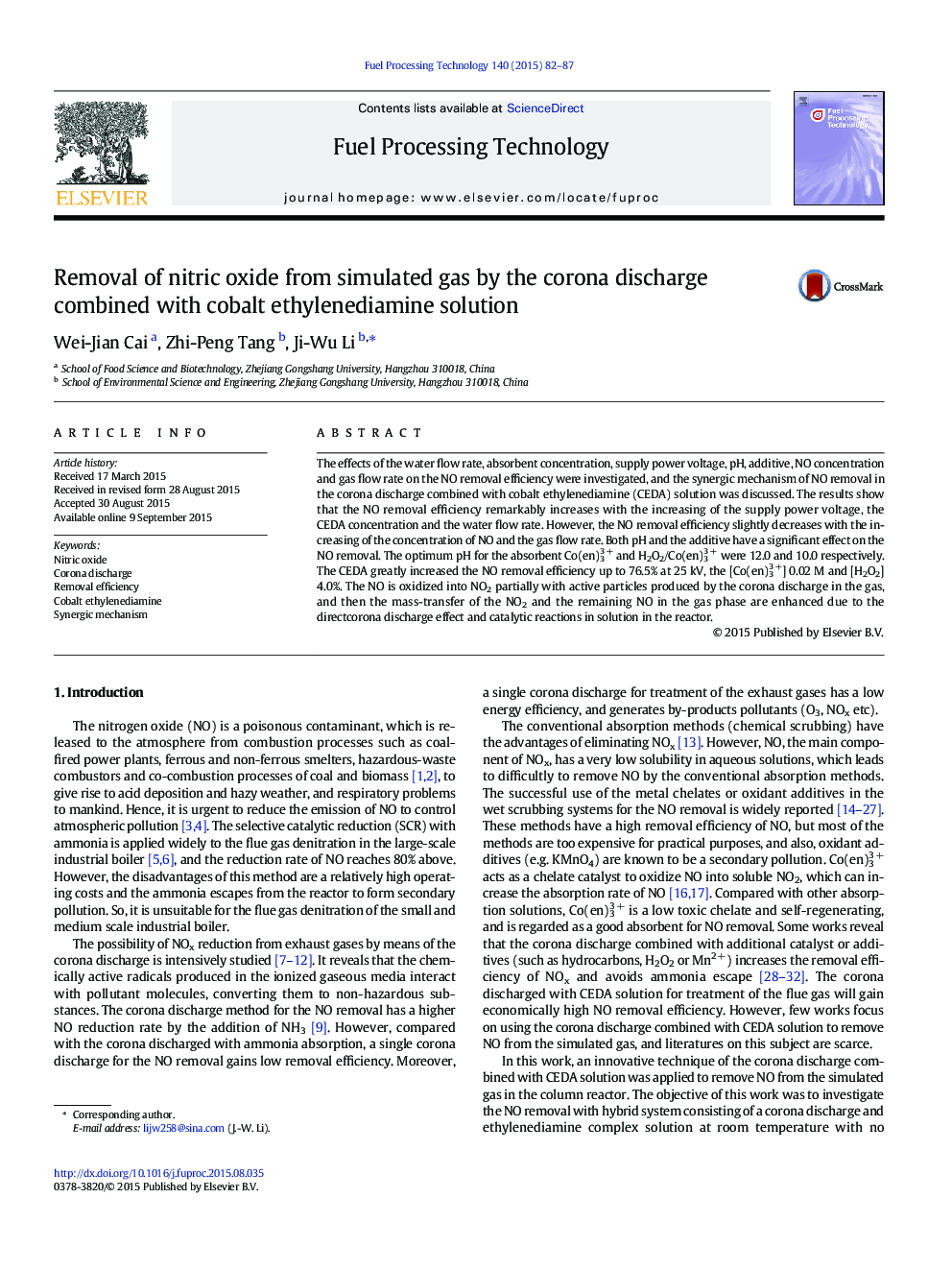| کد مقاله | کد نشریه | سال انتشار | مقاله انگلیسی | نسخه تمام متن |
|---|---|---|---|---|
| 209302 | 461665 | 2015 | 6 صفحه PDF | دانلود رایگان |
• The hybrid of corona discharged with Co(en)33 + was applied to remove NO.
• The de-NO efficiency increased with increasing of power voltage and [Co(en)33 +].
• The pH of solution had greatly effect on the removal of NO.
• The synergy between corona discharge and Co(en)33 + shows a better enhancement.
The effects of the water flow rate, absorbent concentration, supply power voltage, pH, additive, NO concentration and gas flow rate on the NO removal efficiency were investigated, and the synergic mechanism of NO removal in the corona discharge combined with cobalt ethylenediamine (CEDA) solution was discussed. The results show that the NO removal efficiency remarkably increases with the increasing of the supply power voltage, the CEDA concentration and the water flow rate. However, the NO removal efficiency slightly decreases with the increasing of the concentration of NO and the gas flow rate. Both pH and the additive have a significant effect on the NO removal. The optimum pH for the absorbent Co(en)33 + and H2O2/Co(en)33 + were 12.0 and 10.0 respectively. The CEDA greatly increased the NO removal efficiency up to 76.5% at 25 kV, the [Co(en)33 +] 0.02 M and [H2O2] 4.0%. The NO is oxidized into NO2 partially with active particles produced by the corona discharge in the gas, and then the mass-transfer of the NO2 and the remaining NO in the gas phase are enhanced due to the directcorona discharge effect and catalytic reactions in solution in the reactor.
Figure optionsDownload as PowerPoint slide
Journal: Fuel Processing Technology - Volume 140, December 2015, Pages 82–87
